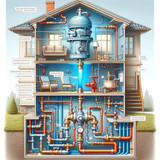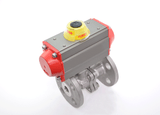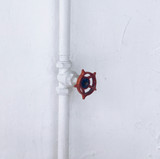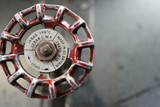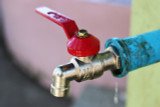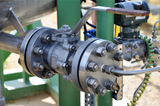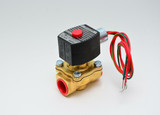Push In Fittings
At Valveman, we know that plumbing doesn’t have to be complicated or require investing in tools you will not use again until your water infrastructure forces you to do so. That’s why we store a selection of push-connect fittings. They’re easy to use, reliable, and fast - what more can you want?
Take a look at our selection of push-fit plumbing fittings and find the right ones for your plumbing system today. Work smarter, not harder, you know?
Why Choose Quick Connect Fittings for Your Plumbing Needs?
Quick connect pipe fittings are a perfect example of adaptability and applicability in plumbing. These fittings have been engineered to ensure a reliable, drip-free connection without special tools or specific skills.
Instead, they use the connect system, which enables the pipes to be joined within seconds without gluing, soldering, or something else. Thanks to this, even DIY people can easily take care of their plumbing needs. Whatever pipes you want to work with, push to connect fittings will more than likely be suitable to your needs.
In addition to the easy connection, push fit fittings also shine when space is limited or access is hard to get. Compactness enables mounting in narrow spaces like behind walls or small utility rooms where alternative ways may be inconvenient. The versatility of the quick manifold fittings places them above the rest in plumbing construction works and renovation of existing plumbing systems.
One of the other key elements of quick-connect fittings is their reusability. Contrary to soldered or glued connections, which are usually permanent once set, quick-connect fittings can be easily disassembled and reinstalled as needed. This versatility allows the system to be aided with system modifications and repairs and minimizes material wastage, making quick-connect fittings an environmental choice.
Moreover, quick-connect fittings provide elite reliability in harsh environments. They are designed to be highly durable, with sophisticated sealing mechanisms that make a very tight and reliable connection that can cope with changes in temperature and pressure. Instant connections, regardless of whether the application is in a residential, commercial, or industrial set-up, guarantee the continuity of the fixtures, therefore minimizing system failures.
These fittings are also all-purpose. They are available in various sizes and configurations to fit different pipe materials, such as copper, PEX, or CPVC. This flexibility gives them a broad spectrum, and they are made for meeting the needs of small houses, big infrastructure projects, plumbing work, and pipeline development.
Finally, push fit fittings are also more cost-effective when you look at the bigger picture. While the upfront cost for the fittings might not differ much from compression fittings or stainless steel fittings, they are less labor-intensive and take less time to install, which lowers the cost of hiring a professional plumber to install them. Additionally, as we already mentioned, they can be reused, which further proves their cost-effectiveness.
Push Fit Plumbing Fittings - Common Applications
As mentioned, push-in fittings are actually a very versatile element - and while its main application is plumbing, it’s not the only one. Other common applications of push connect fittings include:
- Pneumatic systems: Push-in fittings are great for connecting air tools, valves, and actuators to air supply lines.
- Beverage dispensation systems - Because of their ability to handle pressure involved in liquid dispensation, push-in fittings are often used in beverage dispensation systems.
- Irrigation system - Their ease of use makes them a common choice for irrigation systems.
Tips for Installing Push-fit Pipe Fittings
Push-in fittings are pretty straightforward to use - however, learning about proper installation doesn’t hurt and can help you ensure that you won’t have to readjust the fittings. So, here are some of the more helpful tips we could think of when it comes to push-fit connectors installation:
- Preparation is key. Before you start installing your push fitting, pipes must first be properly prepared so that they’re clean, smooth, and debris-free.
- Insertion should be done with appropriate techniques avoiding any twist or forcing.
- Ensure everything is in place by pulling the hoses after the insertion to prevent damage.
- Avoid over-tightening, as it can loosen up the seal of the fitting.
- Make your plumbing layout planning heavenly, and think about pipe routing, accessibility, and future expansion.
- Inspect properly after installation, fixing the leaks right away when they occur.
Push-In Fittings - Plumbing Made Easy with Valveman
All in all, the push-fit fittings are the right choice for a number of reasons. The push-to-connect fittings are tolerant of installation errors; Unlike the threaded connections or soldered joints, they are tolerant of installation errors and can be easily adjusted to fit slight variations in pipe alignment or angle.
They are superior in time-critical situations, less costly in labor, and minimize downtime. Installs usually take less time and can be completed quickly without waiting for curing and drying periods.
Due to their numerous advantages, it comes as no surprise that we store a wide selection of push fit connectors. Regardless of what you need them for, at Valveman, you are sure to find the right ones for your needs.
You can browse through our selection from the comfort of your home, or you can contact us and let our experts help you choose the right product for you.
We’ve been in the game for almost six decades now, and while we only stock products of the highest quality, that’s not the only reason we’ve been at it as long as we have.
We’re a family business, and providing our customers with the right valves and fittings is not only our job - it’s also our passion. This allows us to build connections with our customers, although affordable pricing and prompt shipping definitely don’t hurt either.
Browse through our selection of push in fittings, and find the right one for your needs today!
Resources
Our Posts
View AllUnderstanding Valve Sizes and Measurement
Sizing the appropriate valve is critical to ensuring the performance of your system. Whether you'r …
Read MoreTypes of Water Valves
Hey there, fellow valve enthusiasts! We all know that valves play a crucial role in regulating th …
Read MoreWhat is a Backflow Preventer, and How Does it Work?
When a simple check valve is inadequate for the job, you need a backflow preventer. But knowing …
Read MoreValve inspection - main points of valve testing in Manufacture setting
Industrial facilities rely on different types of valves (such as check valves, for example) to con …
Read MoreTypes of Ball Valves
Ball valves are important components in a vast range of systems, from small family-owned workshops …
Read MoreUnderstanding valve standards and specifications
Hey there, fellow valve enthusiasts! Today, we're looking at valve codes, standards and specifica …
Read MoreHow to Tell if a Valve is On or Off
We have all been there before. You are staring at a valve; you know that you should know if it …
Read MoreUnderstanding Different Types of Valve Connections and Fittings
Hey there, fellow valve enthusiasts! We know valves play a crucial role in regulating the flow of li …
Read MoreTypes of Valve Handles: Lever and Handwheels
Whether you're involved in industrial work, plumbing, or you're a DIY enthusiast, you come across va …
Read MoreThe Basic Parts of a Valve
Valves quietly work in many different areas, even places you wouldn't expect. They're truly every …
Read MoreGas Ball Valves In Industrial Applications - 5 Things to Keep in Mind
Unlike the standard ball valves, most gas ball valves are tested and approved by CSA. These valves a …
Read MoreHow To Correctly Use A 3 Way Valve In Different Applications
To understand the "T"-port and an "L"-port 3-way valves and what makes them different, it's importan …
Read MoreIndustrial Ball Valves - 9 Questions To Make The Right Choice
Ball valves are versatile flow control devices suitable for extensive industrial applications. They …
Read MoreEverything you need to know about valve types
Valves play crucial roles in production lines and equipment performance across a multitude of ind …
Read MoreWhat is a Duty Cycle and How Does it Relate to Electric Ball Valves?
Electric actuation improves the efficiency of processes by maintaining the accuracy of the re …
Read MoreActuated Butterfly Valves 101: All You Need To Know About Their Application In Piping Systems
Butterfly valves are quarter-turn flow control or isolation devices, used for quick shut-off in p …
Read MorePractical Guide To Electric and Pneumatic Actuators – Which One To Choose?
While electrical and pneumatic actuators have several unique benefits and are preferred in differ …
Read MoreHow Do Check Valves Affect Water Pressure in the Piping System?
Check valves also known as "one-way" valves are autonomously operated unidirectional valves that all …
Read MoreUsing an Actuated Ball Valve Or a Solenoid Valve For Best Fluid Control In The System
Both ball valves and solenoid valves serve a wide variety of applications. From a&nb …
Read MoreWhat are the types of solenoid valves?
Favored for offering low power consumption, a compact space envelope, superior speed of ope …
Read More

